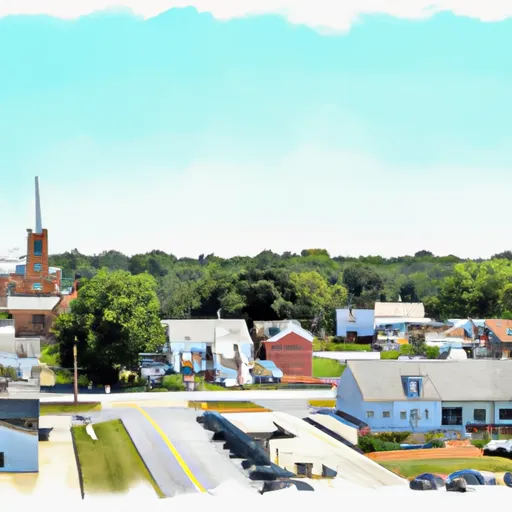-
 Snoflo Premium
Snoflo Premium
Get unlimited access to all our content
With no Ad interruptions! - Start Your Free Trial Login with existing account
Woolford
Eden Index
Climate
9.7
•
Recreation
4.2
•
Community
•
Safeguard
5.4/10

Woolford, Maryland is a charming rural community located on the Eastern Shore of the state. The climate of Woolford is characterized as humid subtropical, with warm summers and mild winters. Summers are typically hot and humid, with temperatures ranging from the 80s to the 90s (Fahrenheit). Winters are generally mild, with temperatures averaging in the 40s and occasional snowfall.
Hydrology is an important aspect of Woolford's environment, as it is surrounded by water bodies. The community lies along the banks of the Chesapeake Bay and is near the Honga River, offering stunning water views and opportunities for water-based activities. The bay and river also provide a diverse ecosystem, attracting various species of fish and wildlife.
Outdoor recreation opportunities in Woolford are abundant. Fishing enthusiasts can enjoy angling for striped bass, bluefish, and white perch in the bay and rivers. Boating, kayaking, and paddleboarding are popular activities for exploring the waterways. The area is also rich in natural beauty, with opportunities for birdwatching, hiking, and wildlife photography.
Overall, Woolford, Maryland offers a pleasant climate, picturesque waterways, and ample outdoor recreation opportunities for residents and visitors alike.
What is the Eden Index?
The Snoflo Eden Index serves as a comprehensive rating system for regions, evaluating their desirability through a holistic assessment of climate health, outdoor recreation opportunities, and natural disaster risk, acknowledging the profound impact of these factors on livability and well-being.
Climate Health Indicator (CHI): 9.7
Woolford receives approximately
1167mm of rain per year,
with humidity levels near 76%
and air temperatures averaging around
15°C.
Woolford has a plant hardyness factor of
7, meaning
plants and agriculture in this region tend to thrive during the non-winter months.
By considering the ideal temperature range, reliable water supplies, clean air, and stable seasonal rain or snowpacks, the Climate Health Indicator (CHI) underscores the significance of a healthy climate as the foundation for quality living.
A healthy climate is paramount for ensuring a high quality of life and livability in a region, fostering both physical well-being and environmental harmony. This can be characterized by ideal temperatures, reliable access to water supplies, clean air, and consistent seasonal rain or snowpacks.
Weather Forecast
Streamflow Conditions
Upper Chesapeake
Area Rivers
Upper Chesapeake
Snowpack Depths
Upper Chesapeake
Reservoir Storage Capacity
Upper Chesapeake
Groundwater Levels
Recreational Opportunity Index (ROI): 4.2
The Recreational Opportunity Index (ROI) recognizes the value of outdoor recreational options, such as parks, hiking trails, camping sites, and fishing spots, while acknowledging that climate plays a pivotal role in ensuring the comfort and consistency of these experiences.
Access to outdoor recreational opportunities, encompassing activities such as parks, hiking, camping, and fishing, is crucial for overall well-being, and the climate plays a pivotal role in enabling and enhancing these experiences, ensuring that individuals can engage in nature-based activities comfortably and consistently.
Camping Areas
| Campground | Campsites | Reservations | Toilets | Showers | Elevation |
|---|---|---|---|---|---|
| Point Lookout State Park | 143 | 2 ft |
Nearby Ski Areas
Catastrophe Safeguard Index (CSI):
The Catastrophe Safeguard Index (CSI) recognizes that natural disaster risk, encompassing floods, fires, hurricanes, and tornadoes, can drastically affect safety and the overall appeal of an area.
The level of natural disaster risk in a region significantly affects safety and the overall livability, with climate change amplifying these risks by potentially increasing the frequency and intensity of events like floods, fires, hurricanes, and tornadoes, thereby posing substantial challenges to community resilience and well-being.
Community Resilience Indicator (CRI):
The Community Resilience Indicator (CRI) recognizes that education, healthcare, and socioeconomics are crucial to the well-being of a region. The CRI acknowledges the profound impact of these elements on residents' overall quality of life. By evaluating educational resources, healthcare accessibility, and economic inclusivity, the index captures the essential aspects that contribute to a thriving community, fostering resident satisfaction, equity, and social cohesion.

